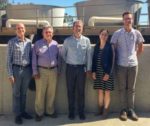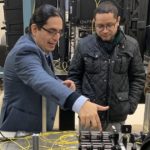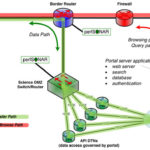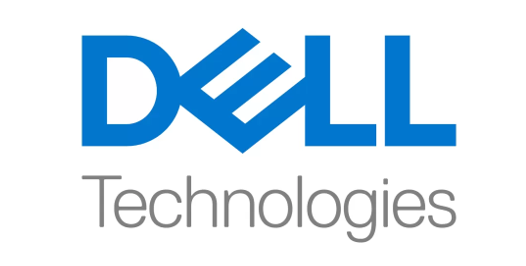SANTA CLARA, Calif. 10/11/2022 – Today AMD (NASDAQ: AMD) announced its collaboration with the Energy Sciences Network (ESnet) on the launch of ESnet6, the newest generation of the U.S. Department of Energy’s (DOE’s) high-performance network dedicated to science. AMD has worked with ESnet since 2018 to integrate adaptive computing for the smart and programmable network nodes of ESnet6, whose extreme […]
DOE to Provide $12M for Research on 5G and Quantum Networking
March 19, 2021 — Today, the U.S. Department of Energy (DOE) announced plans to provide up to $12 million for basic research on advanced 5G and quantum networking. Our modern life has been transformed by wireless and cellular networks, creating a world where humans all over the globe can communicate with each other instantaneously. Research on […]
LBNL Breaks New Ground in Data Center Optimization
Berkeley Lab has been at the forefront of efforts to design, build, and optimize energy-efficient hyperscale data centers. “In the march to exascale computing, there are real questions about the hard limits you run up against in terms of energy consumption and cooling loads,” Elliott said. “NERSC is very interested in optimizing its facilities to be leaders in energy-efficient HPC.”
Department of Energy to Showcase World-Leading Science at SC19
The DOE’s national laboratories will be showcased at SC19 next week in Denver, CO. “Computational scientists from DOE laboratories have been involved in the conference since it began in 1988 and this year’s event is no different. Experts from the 17 national laboratories will be sharing a booth featuring speakers, presentations, demonstrations, discussions, and simulations. DOE booth #925 will also feature a display of high performance computing artifacts from past, present and future systems. Lab experts will also contribute to the SC19 conference program by leading tutorials, presenting technical papers, speaking at workshops, leading birds-of-a-feather discussions, and sharing ideas in panel discussions.”
DOE Extending Quantum Networks for Long Distance Entanglement
Scientists from Brookhaven National Laboratory, Stony Brook University, and DOE’s Energy Sciences Network (ESnet) are collaborating on an experiment that puts U.S. quantum networking research on the international map. Researchers have built a quantum network testbed that connects several buildings on the Brookhaven Lab campus using unique portable quantum entanglement sources and an existing DOE ESnet communications fiber network—a significant step in building a large-scale quantum network that can transmit information over long distances.
SLAC Researchers use ESnet for Record Speed Transfer of 1 Petabyte of Data
“The innovative and versatile nature of ESnet’s OSCARS enabled us to design a unique 5000-mile 100 Gbps loop, which our ESnet colleagues quickly helped establish in 2015,” said Zettar Founder and CEO Chin Fang. “We were thus able to have the data storage clusters and the data transfer nodes co-located in the same rack although they were at both ends of the loop. Physically they were separated by inches, but digitally they are separated by 5000miles. Further the clusters themselves have a self-imposed cap of 80 Gbps.”
Overcoming Roadblocks in Computational Networks
Mariam Kiran is using an early-career research award from DOE’s Office of Science to develop methods combining machine-learning algorithms with parallel computing to optimize such networks. “This type of science and the problems it can address can make a real impact, Kiran says. “That’s what excites me about research – that we can improve or provide solutions to real-world problems.”
Engineering a Better Portal for Scientific Discovery
Engineers from ESnet and the Globus team have designed a new approach that makes data sharing faster, more reliable, and more secure. As described in a new report, the “Science DMZ” provides a new architecture to meet increasing demands for accessing shared data.
Speeding Data Transfer with ESnet’s Petascale DTN Project
Researchers at the DOE are looking to dramatically increase their data transfer capabilities with the Petascale DTN project. “The collaboration, named the Petascale DTN project, also includes the National Center for Supercomputing Applications (NCSA) at the University of Illinois in Urbana-Champaign, a leading center funded by the National Science Foundation (NSF). Together, the collaboration aims to achieve regular disk-to-disk, end-to-end transfer rates of one petabyte per week between major facilities, which translates to achievable throughput rates of about 15 Gbps on real world science data sets.”
How Zettar Transferred 1 Petabyte of Data in Just 34 Hours Using AIC Servers
In the world of HPC, moving data is a sin. That may be changing. “Just a few weeks ago, AIC announced the successful completion of a landmark, 1-petabyte transfer of data in 34 hours, during a recent test by Zettar that relied on the company’s SB122A-PH, 1U 10-bay NVMe storage server. The milestone was reached using a unique 5000-mile 100Gbps loop which is a SDN layer over a shared, production 100G network operated by the US DOE’s ESNet.”












